Subtotal: £52.26
Nanovit Granules – Protein-Packed Micro Granules for Fish & Fry, High Protein Fish Food for Thriving Fry and Friends, Enhances Aquarium Feeding Experience for Optimal Fry Nutrition
£2.00 – £7.00
Welcome these beautiful creatures into your aquarium with Nanovit Granules, the ultimate high protein fish food. These micro granules enhance colors and support flourishing growth in small fish and fry, creating a vibrant aquatic community. Perfect for nurturing your peaceful companions.
Nutritional Overview
Essential Care Guide for Your Nanovit Granules
| Optimal Living Conditions | |
|---|---|
| Water Temperature | 24-27°C (75-81°F) |
| pH Level | 6.5-7.5 |
| Water Hardness | 4-12 dKH |
| Minimum Tank Size | 80L (20 gal) |
| Salinity | Freshwater |
| Care Level | Beginner Friendly |
Nanovit Granules are expertly formulated to provide a high-protein diet essential for the growth and health of your aquatic companions, particularly fish fry and small fish. Each granule is designed to be easily digestible, ensuring that even the tiniest of fish can benefit from the rich nutrient profile. The primary ingredients include a blend of high-quality fish meal, spirulina, and essential vitamins that promote vibrant coloration and robust health. This balanced formula not only supports growth but also enhances the overall vitality of your fish, making it a staple in any aquarium feeding regimen.
✓ Positive Information
Care level: Easy
Feeding Specifications
When it comes to feeding your fish friends, the right portion sizes and frequency are crucial for their development. For fry and small fish, a feeding schedule of 2-3 times a day is recommended, providing only as much food as they can consume within 2-3 minutes. This prevents overfeeding and maintains water quality. The granules should be sprinkled on the water surface to allow them to float before sinking, mimicking the natural feeding behavior of fish. Observing your fish during feeding can also help you gauge their appetite and adjust portions accordingly.
⚠ Important Feeding Note
Always ensure that the feeding area is clean and free from waste to promote a healthy environment.
Suitable Fish Species
Nanovit Granules are ideal for a variety of small fish species and fry, making them a versatile choice for any aquarium setup. Suitable species include guppies, bettas, tetras, and various types of cichlids. These granules cater to the nutritional needs of both freshwater and saltwater species, ensuring that your aquatic friends receive a complete and balanced diet. As your fish grow, they will appreciate the protein-packed formula, which supports their development and enhances their natural colors.
Nutritional Benefits
The nutritional benefits of Nanovit Granules extend beyond mere growth. The high protein content promotes muscle development and overall health, while the inclusion of spirulina helps enhance coloration, making your fish appear more vibrant and lively. Additionally, the presence of essential vitamins and minerals supports the immune system, reducing the likelihood of disease and promoting longevity. Feeding your fish a diet rich in these nutrients not only contributes to their physical appearance but also ensures they thrive in their aquatic environment.
✓ Health Benefits
Supports immune system, enhances coloration, and promotes vitality.
Storage Guidelines
To maintain the freshness and nutritional integrity of Nanovit Granules, proper storage is essential. It is recommended to keep the granules in a cool, dry place, away from direct sunlight. The original packaging is designed to keep moisture out, but transferring the granules to an airtight container can provide additional protection. Always check the expiration date and avoid using expired products, as they may not provide the necessary nutrients for your fish. Proper storage ensures that your aquatic companions receive the best possible diet.
Ingredient Analysis
The ingredients in Nanovit Granules are carefully selected to ensure high quality and nutritional value. The primary component, fish meal, is a rich source of protein that supports growth and development. Spirulina, a blue-green algae, is included for its high nutrient density and health benefits. Other ingredients may include various vitamins and minerals that are crucial for maintaining a balanced diet. Each component is sourced responsibly, ensuring that your fish receive only the best in their diet.
⚠ Ingredient Quality Assurance
All ingredients are sourced from reputable suppliers to ensure safety and quality.
Feeding Schedule
Establishing a consistent feeding schedule is vital for the health of your fish. For fry and small fish, it is advisable to feed them 2-3 times daily, ensuring that they receive adequate nutrition throughout their growth stages. As they mature, you may adjust the frequency based on their appetite and size. It is important to observe your fish during feeding times to ensure they are consuming the granules and not leaving excess food that could pollute the water. A well-planned feeding schedule contributes to a healthy aquarium environment.
Health Benefits
Feeding your fish a diet rich in protein and essential nutrients like those found in Nanovit Granules can lead to significant health benefits. A strong immune system is crucial for preventing diseases, and the vitamins in these granules support overall vitality. Additionally, the high-quality ingredients promote healthy growth, ensuring that your fish reach their full potential. Regular feeding of Nanovit Granules can also enhance the coloration of your fish, making them more vibrant and visually appealing.
✓ Long-term Health Benefits
Promotes longevity, enhances coloration, and supports immune health.
Supplement Integration
Nanovit Granules can be effectively integrated with other types of fish foods to provide a well-rounded diet for your aquatic companions. For instance, you may choose to alternate between these granules and frozen or live foods, which can provide additional variety and nutrients. It is essential to monitor the response of your fish to different food types and adjust their diet accordingly. This approach not only keeps your fish engaged during feeding times but also ensures they receive a comprehensive range of nutrients.
Water Quality Impact
The type of food you provide can significantly impact the water quality in your aquarium. Nanovit Granules are designed to minimize waste, which is crucial for maintaining a clean and healthy environment for your fish. Overfeeding can lead to excess waste and deteriorating water quality, so it is important to feed only what your fish can consume in a short period. Regular water testing and maintenance are recommended to ensure optimal conditions for your aquatic friends.
⚠ Water Quality Notice
Monitor water parameters regularly to ensure a healthy environment.
Special Dietary Needs
Certain fish may have specific dietary requirements based on their species, age, and health status. Nanovit Granules are suitable for a wide range of fish, but it is important to consider the unique needs of your aquatic companions. For instance, breeding fish may require higher protein levels, while recovering fish may benefit from a more varied diet. Observing your fish and adjusting their diet accordingly can help ensure their well-being and promote optimal health.
Feeding Techniques
Employing effective feeding techniques can enhance the feeding experience for both you and your fish. For example, using a feeding ring can help contain the granules in a specific area, making it easier for your fish to find and consume the food. Additionally, training your fish to respond to feeding times can create a more interactive experience, allowing you to observe their behavior and health closely. Experimenting with different feeding methods can also keep your fish engaged and promote a healthy appetite.
Quality Assurance
Nanovit Granules undergo rigorous testing to ensure that they meet high standards of quality and safety. Each batch is carefully inspected for nutritional content and ingredient integrity, ensuring that you provide the best possible diet for your fish. Look for certifications and quality seals on the packaging, as these indicate that the product has been evaluated by third-party organizations for safety and efficacy. By choosing high-quality fish food, you can feel confident in the well-being of your aquatic companions.
✓ Quality Assurance
Rigorous testing ensures safety and nutritional integrity.
Comparison Guide
When selecting fish food, it’s essential to compare different options to find the best fit for your aquatic companions. Nanovit Granules stand out due to their high protein content and balanced formulation, making them an excellent choice for fry and small fish. While other dry fish foods may offer similar benefits, the specific combination of ingredients in Nanovit Granules ensures optimal growth and health. Consider factors such as ingredient quality, nutritional content, and suitability for your fish species when making your decision.
Expert Recommendations
Aquarium experts recommend incorporating Nanovit Granules into your fish feeding routine to support the health and growth of your aquatic friends. Regularly evaluate your fish’s health and adjust their diet as necessary, taking into account their life stage and specific needs. Consulting with a veterinarian or aquatic specialist can provide additional insights into the best dietary practices for your fish, ensuring they thrive in their environment. By following expert recommendations, you can create a nurturing habitat that promotes optimal health and well-being.
Nutritional Science
The formulation of Nanovit Granules is backed by nutritional science, ensuring that your fish receive a complete and balanced diet. Research into fish nutrition has shown the importance of protein, vitamins, and minerals in promoting growth and health. The ingredients used in Nanovit Granules are carefully selected to meet these nutritional needs, providing a diet that supports not only physical development but also enhances the immune system and overall vitality. By understanding the science behind fish nutrition, you can make informed decisions about the best foods for your aquatic companions.
Water Quality Parameters
Optimal Range
24-27°C
6.5-7.5
0 ppm
Caution Zone
22-24°C or 27-29°C
6.0-6.5 or 7.5-8.0
0.25-0.5 ppm
Danger Zone
<22°C or >29°C
<6.0 or >8.0
>0.5 ppm
Monitoring Tip: Test water parameters weekly and perform regular water changes to maintain optimal conditions for your aquatic friends!
Frequently Asked Questions
Q: How much Nanovit Granules should I feed my fish?
Feeding amounts of Nanovit Granules depend on the size and age of your fish. For fry and smaller fish, a pinch of granules should suffice, as they have smaller stomachs and require less food. It’s advisable to feed 2-3 times daily, ensuring that all the food is consumed within a few minutes to avoid water quality deterioration. Larger fish may require slightly more, but always observe their feeding behaviour to adjust accordingly. Overfeeding can cause health issues and negatively impact water quality, so it’s essential to provide the right quantities for optimal health.
✓ Expert Tip
Always monitor your fish after feeding; if they appear lethargic or refuse food, it may indicate overfeeding or stress.
Q: How frequently should I feed Nanovit Granules?
For optimal health, it is best to feed your fish once or twice daily with Nanovit Granules. Young fry may require more frequent feedings, approximately 3-4 times a day, as they have higher energy needs. Always ensure that the amounts provided can be consumed within a few minutes to prevent any food leftovers that could pollute the water. Adjust feeding frequency based on the fish’s activity levels and health; active fish may require more frequent feedings than those that are less active.
✓ Expert Tip
Consider varying the feeding schedule slightly to mimic natural conditions, enhancing your fish’s feeding behaviour.
Q: Which fish species can consume Nanovit Granules?
Nanovit Granules are suitable for a variety of small freshwater and marine fish, particularly those that thrive on higher protein diets. This includes species such as guppies, bettas, and various types of tetras, as well as fry of larger species. The micro granule size makes it ideal for smaller mouths, ensuring that even the tiniest fish can benefit from its nutritional profile. Always ensure that the specific dietary needs of your fish friends are met, as some species may require additional dietary supplements.
✓ Expert Tip
Research the specific nutritional requirements of your fish species to ensure they are receiving a balanced diet.
Q: How should I properly store Nanovit Granules?
To maintain the freshness and nutritional quality of Nanovit Granules, store the granules in a cool, dry place away from direct sunlight. Ideally, keep them in their original container, ensuring it is sealed tightly after each use to prevent moisture ingress. For extended shelf life, consider refrigerating the granules, but allow them to return to room temperature before feeding to avoid shocking your fish. Regularly check for any signs of spoilage, such as a change in smell or texture.
✓ Expert Tip
Use a desiccant pouch in the container to keep moisture levels low.
Q: What are the nutritional benefits of Nanovit Granules?
Nanovit Granules are designed to provide a high protein content essential for the growth and development of fry and small fish. The granules contain a balanced mix of proteins, vitamins, and minerals, which support overall health, enhance colouration, and promote a robust immune system. This protein-packed formulation aids in muscle development, critical for active fish, and assists in the recovery of fish that may be unwell. The variety of nutrients helps ensure that all dietary needs are met, making it a comprehensive food source.
✓ Expert Tip
Consider supplementing with other food types occasionally to provide a varied diet.
Q: Can I mix Nanovit Granules with other food types?
Yes, you can mix Nanovit Granules with other types of fish food to provide a balanced diet for your aquatic companions. Combining granules with flakes or freeze-dried food can offer a variety of textures and flavours, which may stimulate feeding behaviour and ensure that fish receive a broad spectrum of nutrients. However, be cautious not to overfeed; ensure all food is consumed promptly to maintain water quality. Observing your fish’s preferences will help you develop the best feeding strategy.
✓ Expert Tip
Keep track of how your fish respond to different food combinations to refine their diet.
Q: How long does Nanovit Granules remain fresh once opened?
Once opened, Nanovit Granules can remain fresh for several months if stored correctly. It is crucial to keep the container tightly sealed and stored in a cool, dark place. Check the expiry date on the packaging, and always use your senses to assess freshness; any off-smells or changes in texture indicate spoilage. Proper storage will help maintain the granules’ nutritional integrity, ensuring your fish friends receive the best possible diet.
✓ Expert Tip
Label the container with the date of opening to keep track of freshness.
Q: Will Nanovit Granules affect my water quality?
Yes, like any fish food, Nanovit Granules can impact water quality if overfed. Excess food can lead to increased ammonia levels, which are harmful to fish health. It is vital to monitor feeding amounts and ensure all food is consumed within a few minutes. Regular water testing and maintenance will help you maintain optimal water quality. Additionally, consider performing partial water changes to dilute any potential toxins that may arise from uneaten food.
✓ Expert Tip
Implement a regular cleaning schedule for your aquarium to further enhance water quality.
Q: Is Nanovit Granules suitable for breeding fish?
Absolutely, Nanovit Granules are an excellent choice for breeding fish, particularly fry. The high protein content supports growth and development, which is crucial during the early life stages. Providing a nutrient-rich diet enhances the health of both the parents and their offspring. Implementing a varied diet during breeding can also improve the quality of the fry, leading to better survival rates. Ensure that the granules are appropriately sized for the fry to consume easily.
✓ Expert Tip
Consider supplementing with live food during breeding for added nutrition and stimulation.
Q: How do I transition my fish to Nanovit Granules?
Transitioning your fish to Nanovit Granules should be done gradually to prevent digestive upset. Start by mixing a small amount of the granules with their current food, increasing the ratio over several days until they are exclusively on the granules. Monitor your fish during this period for any signs of stress or refusal to eat. If any issues arise, revert to their previous diet before retrying the transition. This method helps ensure a smooth dietary change.
✓ Expert Tip
Always observe your fish’s behaviour during the transition; if they seem disinterested, reconsider the process.
Q: What ingredients are contained in Nanovit Granules?
Nanovit Granules are formulated with high-quality ingredients, including fish meal, spirulina, and various vitamins and minerals that are essential for fish health and growth. The use of premium protein sources ensures that your aquatic companions receive the necessary nutrients for muscle development and overall vitality. The inclusion of spirulina supports immune function and enhances colouration, making it a well-rounded food option for your fish friends.
✓ Expert Tip
Always check the ingredient list for any specific dietary needs or allergies your fish may have.
Q: How does Nanovit Granules support fish health and growth?
The nutrient-rich formulation of Nanovit Granules is specifically designed to support optimal health and growth in fish. High protein content promotes muscle development, essential for active fish, while vitamins and minerals enhance immune function, reducing susceptibility to diseases. Regular feeding of these granules can lead to improved colouration and vitality, making your fish appear more vibrant and lively. The granules also assist in digestion, ensuring that fish effectively absorb the nutrients they need for a healthy life.
✓ Expert Tip
Monitor your fish’s condition regularly to assess the effectiveness of their diet.
| size | 10g, 100ml/70g |
|---|


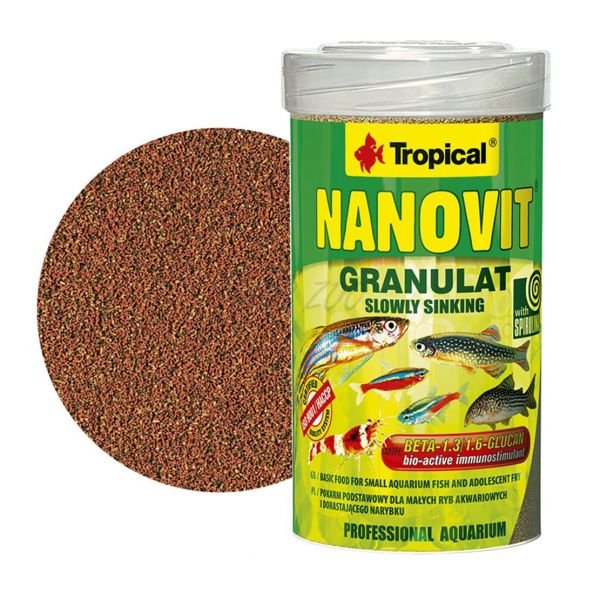
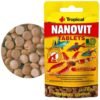
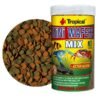
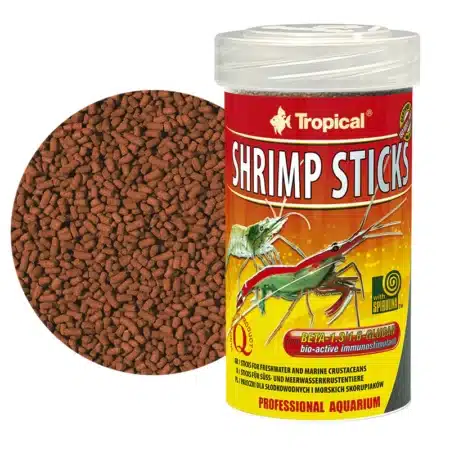
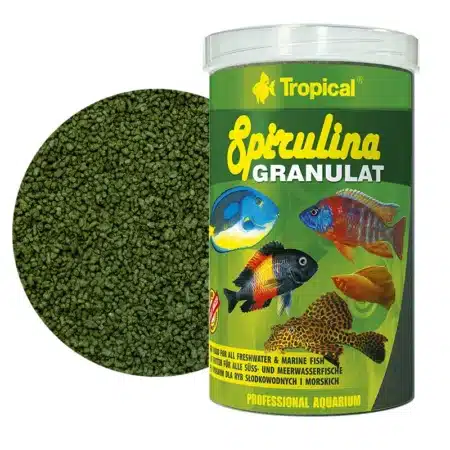
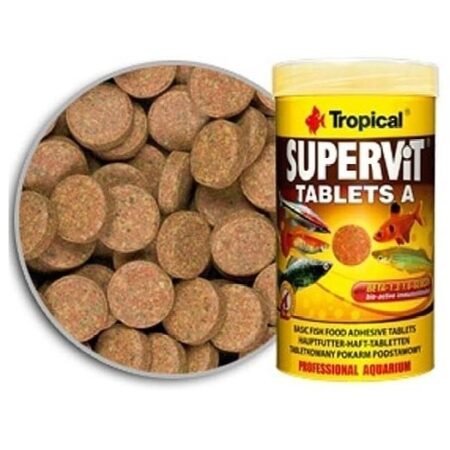
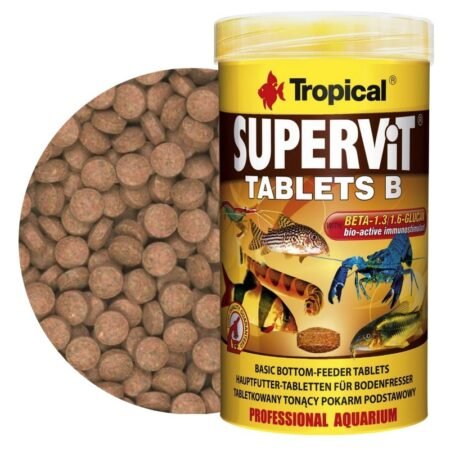
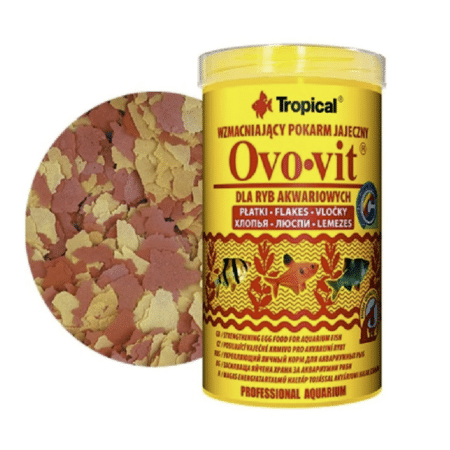
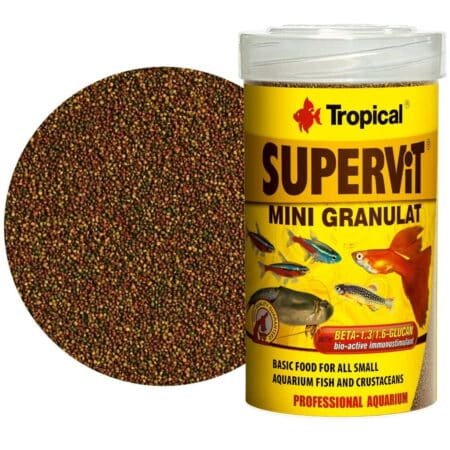
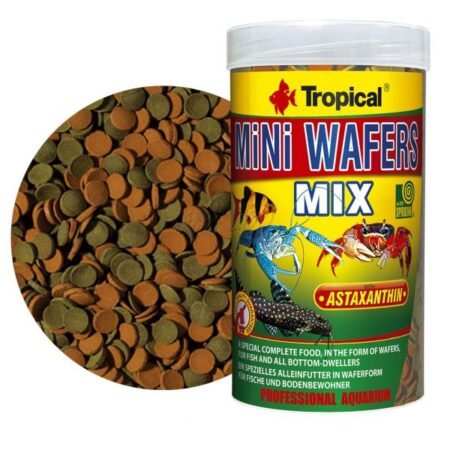
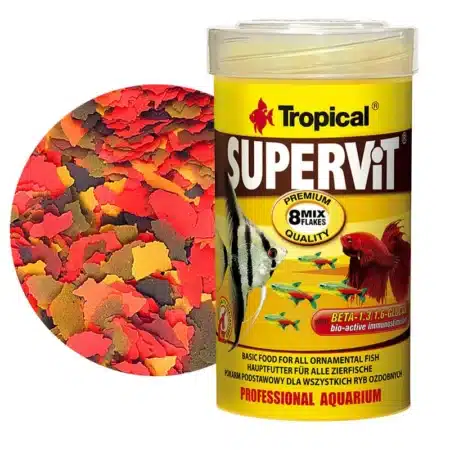
Emily Carter (verified owner) –
I’m delightfully impressed with the Nanovit Granules! As a passionate fish parent, I always prioritize the health of my aquarium inhabitants, especially my small fish and fry. After incorporating these micro granules into their diet for the past two months, I’ve seen a remarkable transformation. The fry are growing more vibrantly, and my adult fish seem much more energetic. The size of the granules is just right for their tiny mouths, ensuring they get the nutrition they need without any waste in the tank. Compared to other brands I’ve tried, these granules have a superior blend of proteins that my fish just can’t resist. Plus, I appreciate that they float for a while before sinking, allowing all levels of fish to enjoy them. My only minor concern was the packaging, which could be improved for resealability, but that’s a small trade-off for such quality food. I highly recommend Nanovit Granules for anyone keeping small fish or fry; you won’t be disappointed! They truly are a game-changer for fish welfare and growth.
Emily Hartman (verified owner) –
I recently started using Nanovit Granules for my aquarium, and I couldn’t be happier! As a caring fish parent, providing the best diet for my fry and small fish is a top priority. After just two weeks, I’ve noticed a significant improvement in their growth and energy levels. The micro granules are perfect for the tiny mouths of my guppy fry—they can actually eat them without any trouble! I compared these with another popular brand, and while the other food was too large and messy, Nanovit is easy to manage and doesn’t cloud the water. Plus, I love how it’s packed with protein, which is essential for their development. In terms of feeding experience, my fish are more active and seem genuinely excited during mealtime. If you’re looking for high-quality fish food that your fry will thrive on, I highly recommend trying Nanovit Granules. Just make sure to monitor your feeding to avoid overfeeding, as they can get quite enthusiastic! Overall, I’m thrilled with my purchase and will definitely be ordering more soon.